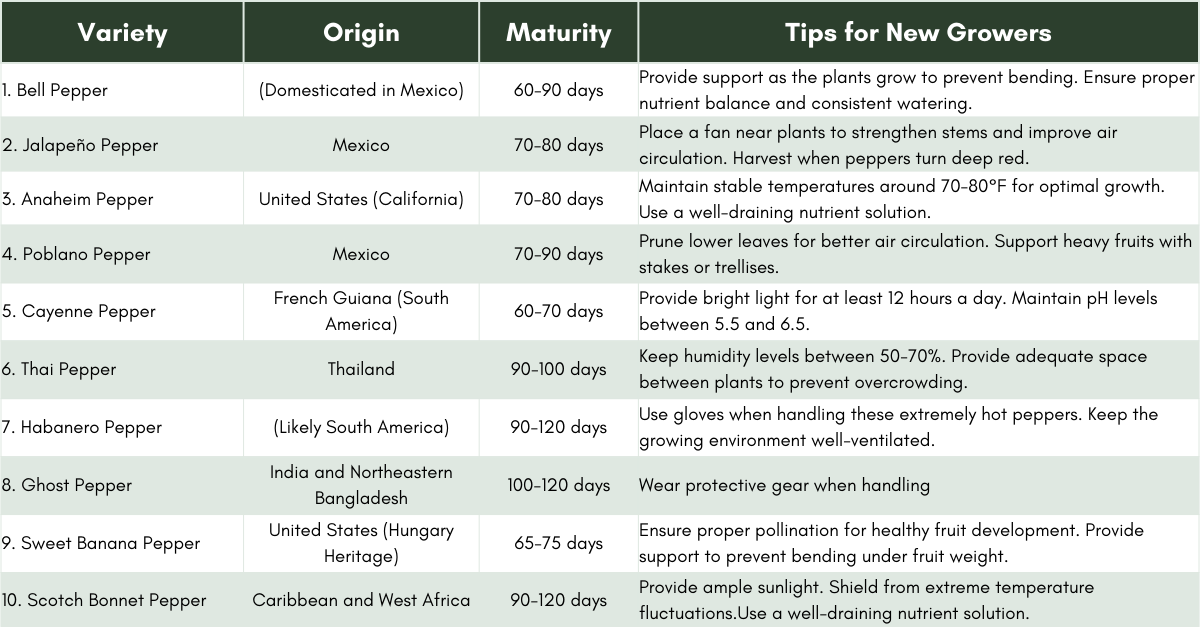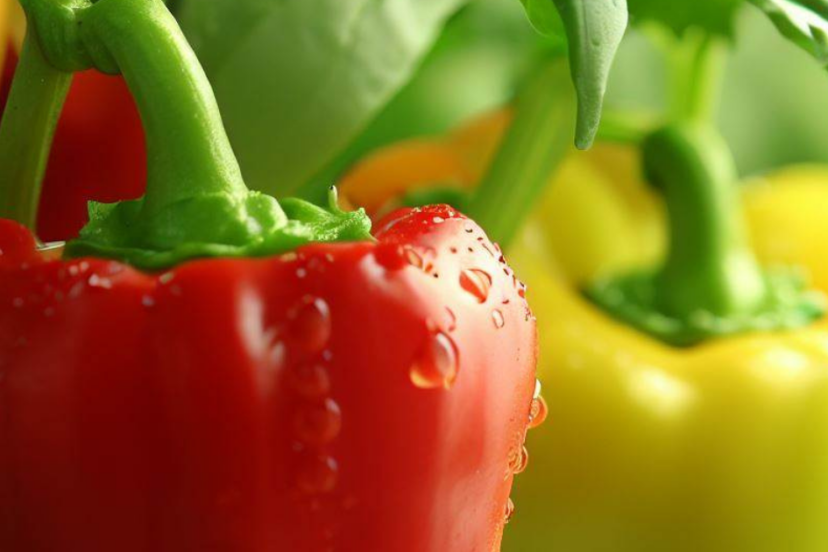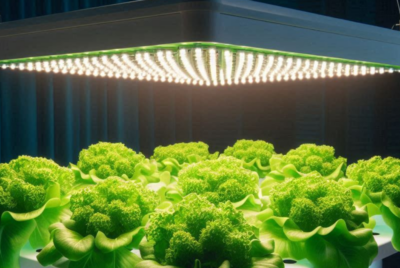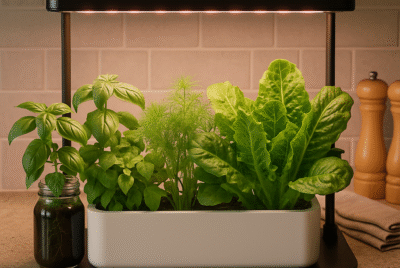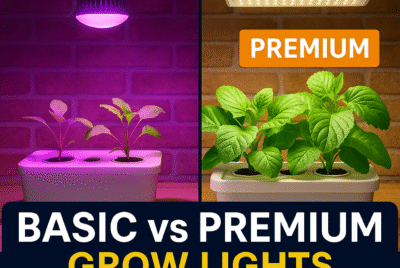Welcome to the world of hydroponic peppers, where you can savor the vibrant flavors and heat of these spicy delights. In this article, we’ll explore the benefits, techniques, and varieties that will help you cultivate delicious and thriving hydroponic peppers.
Benefits of Growing Peppers Hydroponically
Hydroponic pepper cultivation offers numerous advantages that make it an appealing choice for pepper enthusiasts. Firstly, hydroponics allows for year-round cultivation, ensuring a continuous supply of fresh peppers regardless of the season. This steady availability enables you to elevate your culinary creations and enjoy the flavors of peppers throughout the year.
Moreover, hydroponic systems provide precise control over nutrient delivery, resulting in healthier and more vigorous pepper plants. By eliminating the uncertainties of soil-based cultivation, hydroponics minimizes the risk of nutrient deficiencies and allows plants to reach their full potential.
Top 10 Pepper Varieties for Hydroponic Cultivation
Popular Hydroponic Pepper Varieties
Several pepper varieties thrive in hydroponic systems. Each variety offers its own unique flavor profile and heat intensity, allowing you to create a diverse range of culinary experiences.Some popular choices include the following Top 1o:
1. Bell Pepper (Capsicum annuum) – The Versatile Bellwether of Vibrant Colors and Sweetness
Bell Peppers, scientifically known as Capsicum annuum, stand tall as the versatile bellwether in the world of hydroponic peppers. With their array of vibrant colors, including red, green, yellow, and orange, these peppers bring visual splendor to any culinary creation. Renowned for their crisp texture and delightful sweetness, Bell Peppers are a must-have in hydroponic gardens. Whether sliced into salads, stuffed with savory fillings, or grilled to perfection, their versatility and delectable taste make them an enduring favorite for chefs and gardeners alike.
2. Jalapeño Pepper (Capsicum annuum ‘Jalapeño’) – The Zesty Maestro of Spice and Flavor
Jalapeño Peppers, or Capsicum annuum ‘Jalapeño,’ take center stage as the zesty maestro of spice and enticing flavor. With their signature green hue and iconic heat, these peppers add a fiery kick to various dishes. Grown hydroponically, Jalapeño Peppers flourish, allowing enthusiasts to savor their bold taste year-round. From salsas and sauces to stuffed delicacies, their medium spiciness and tantalizing flavor profile make them a staple in the kitchens of chili lovers and adventurous cooks.
3. Anaheim Pepper (Capsicum annuum ‘Anaheim’) – The California Dream of Mildness and Versatility
Anaheim Peppers, scientifically known as Capsicum annuum ‘Anaheim,’ embody the California dream of mildness and culinary versatility. With their elongated green pods, these peppers exude a mild heat, making them ideal for those seeking a more subtle spice experience. Hydroponically grown Anaheim Peppers showcase remarkable adaptability, offering gardeners a bountiful harvest of these delightful gems. Whether roasted, chopped, or stuffed, their gentle spiciness and adaptable taste shine through, making them a favorite for cooks who love a touch of mellow zest.
4. Poblano Pepper (Capsicum annuum ‘Poblano’) – The Mexican Mosaic of Flavor and Complexity
Poblano Peppers, or Capsicum annuum ‘Poblano,’ compose a Mexican mosaic of flavor and delightful complexity. With their dark green, heart-shaped pods, these peppers embody a rich heritage and culinary tradition. When nurtured hydroponically, Poblano Peppers flourish, presenting growers with a bountiful yield of mildly spicy delights. From iconic dishes like chiles rellenos to tantalizing sauces, their alluring taste, with earthy undertones and mild heat, transports taste buds to the heart of Mexican cuisine.
5. Cayenne Pepper (Capsicum annuum ‘Cayenne’) – The Fiery Phoenix of Intense Heat and Tangy Zing
Cayenne Peppers, scientifically known as Capsicum annuum ‘Cayenne,’ rise as the fiery phoenix, embodying intense heat and a tangy zing. With their slender, red-hot pods, these peppers command attention and inspire culinary creativity. Hydroponically cultivated Cayenne Peppers thrive, presenting growers with an abundant supply of potent spice. From fiery hot sauces to spicy marinades, their intense heat, combined with a tangy punch, ignites taste buds, making them a cherished choice for adventurous chili enthusiasts and daring cooks.
6. Thai Pepper (Capsicum annuum ‘Thai’) – The Exotic Emissary of Intense Heat and Aromatic Nuances
Thai Peppers, or Capsicum annuum ‘Thai,’ serve as the exotic emissary, delivering intense heat and aromatic nuances. With their petite, fiery red pods, these peppers pack a powerful punch in a small package. Grown hydroponically, Thai Peppers flourish, allowing gardeners to harvest an abundance of these piquant gems. From spicy stir-fries to authentic Thai curries, their fiery heat and distinctive aroma elevate Asian-inspired dishes, captivating spice enthusiasts and Thai cuisine aficionados alike.
7. Habanero Pepper (Capsicum chinense ‘Habanero’) – The Scorching Sunburst of Fierce Heat and Fruity Notes
Habanero Peppers, scientifically known as Capsicum chinense ‘Habanero,’ radiate as the scorching sunburst, unleashing fierce heat and tantalizing fruity notes. With their lantern-like orange, red, or yellow pods, these peppers symbolize a flavor adventure. Hydroponically nurtured Habanero Peppers thrive, offering growers a bountiful yield of intense spice. From fiery salsas to mouthwatering hot sauces, their scorching heat, intertwined with fruity undertones, entice heat-seekers and brave culinary explorers.
8. Ghost Pepper (Capsicum chinense ‘Bhut Jolokia’) – The Eerie Eruption of Extreme Heat and Smoky Flavors
Ghost Peppers, scientifically known as Capsicum chinense ‘Bhut Jolokia,’ emerge as the eerie eruption, embodying extreme heat and smoky flavors. With their hauntingly fiery red pods, these peppers are revered for their scorching heat levels. Cultivated hydroponically, Ghost Peppers flourish, providing growers with a potent yield of these blazing gems. From adding a fiery kick to spicy chutneys to experimenting with daring chili extracts, their intense heat, coupled with smoky undertones, challenges even the most seasoned spice enthusiasts and bold culinary adventurers.
9. Sweet Banana Pepper (Capsicum annuum ‘Sweet Banana’) – The Sunny Serenade of Mellow Sweetness and Tang
Sweet Banana Peppers, or Capsicum annuum ‘Sweet Banana,’ grace gardens as the sunny serenade, offering mellow sweetness and a tangy twist. With their elongated, vibrant yellow pods, these peppers bring a burst of color and delightful taste to dishes. Grown hydroponically, Sweet Banana Peppers thrive, allowing gardeners to enjoy a plentiful harvest of these sunny gems. Whether pickled, grilled, or added to salads, their mild heat and tangy undertones lend a playful note to culinary creations, making them a cherished choice for cooks seeking a taste of vibrant sweetness.
1. Scotch Bonnet Pepper (Capsicum chinense) – The Fiery Jewel of the Caribbean and West Africa
Scotch Bonnet Peppers, also known as Bonney peppers, are widely enjoyed in Caribbean and West African cuisine. These small, lantern-shaped peppers range in colors from green to vibrant shades of yellow, orange, or red. Renowned for their searing heat and distinctive fruity flavor, they add a bold kick to traditional dishes like jerk chicken and pepper sauce. When growing Scotch Bonnet Peppers, provide them with ample sunlight and well-draining soil, and ensure they are shielded from extreme temperature fluctuations.
Factors to Consider in Variety Selection
When selecting pepper varieties for hydroponic cultivation, consider factors such as heat tolerance, growth habits, and maturation time. Choose varieties that align with your taste preferences, desired spiciness level, and culinary uses. Opt for disease-resistant varieties to minimize potential challenges.
Setting up a Hydroponic System for Peppers
Choosing the Right Hydroponic Kit
Select a
Hydroponic Kit that suits your space, resources, and growing goals. Options include nutrient film technique (NFT), deep water culture (DWC), or ebb and flow systems. Each system has its own advantages, so choose based on your preferences and the specific requirements of peppers.
Creating the Ideal Growing Environment
Peppers thrive in warm and sunny conditions. Set up your hydroponic system in a location that receives ample sunlight or install high-quality artificial grow lights. Maintain a temperature range of 70-85°F (21-29°C) to provide the optimal environment for pepper growth.
Providing Proper Support for Pepper Plants
Pepper plants can become top-heavy as they bear fruit, so providing adequate support is crucial. Use trellises, stakes, or tomato cages to help support the plants and prevent branches from breaking under the weight of peppers. Regularly monitor and adjust the support structures as the plants grow.
Nutrient Management for Hydroponic Peppers
Understanding Nutrient Requirements
Peppers have specific nutrient requirements to support their growth and fruit production. These include nitrogen (N), phosphorus (P), potassium (K), and various micronutrients. Learn about the ideal nutrient concentrations for peppers and ensure a balanced nutrient solution for optimal plant health.
Monitoring and Adjusting Nutrient Levels
Regularly monitor the nutrient levels in your hydroponic system using electrical conductivity (EC) and pH meters. Adjust the nutrient solution accordingly to maintain the appropriate nutrient balance. Monitoring and adjusting nutrient levels throughout the growth cycle is crucial for robust pepper plants and flavorful fruits.
Common Nutrient Deficiencies in Peppers
Pay attention to signs of nutrient deficiencies in pepper plants. Symptoms such as yellowing leaves, stunted growth, or blossom end rot can indicate nutrient imbalances. Address deficiencies promptly by adjusting the nutrient solution or supplementing with specific nutrients.
Watering and Irrigation Techniques for Hydroponic Peppers
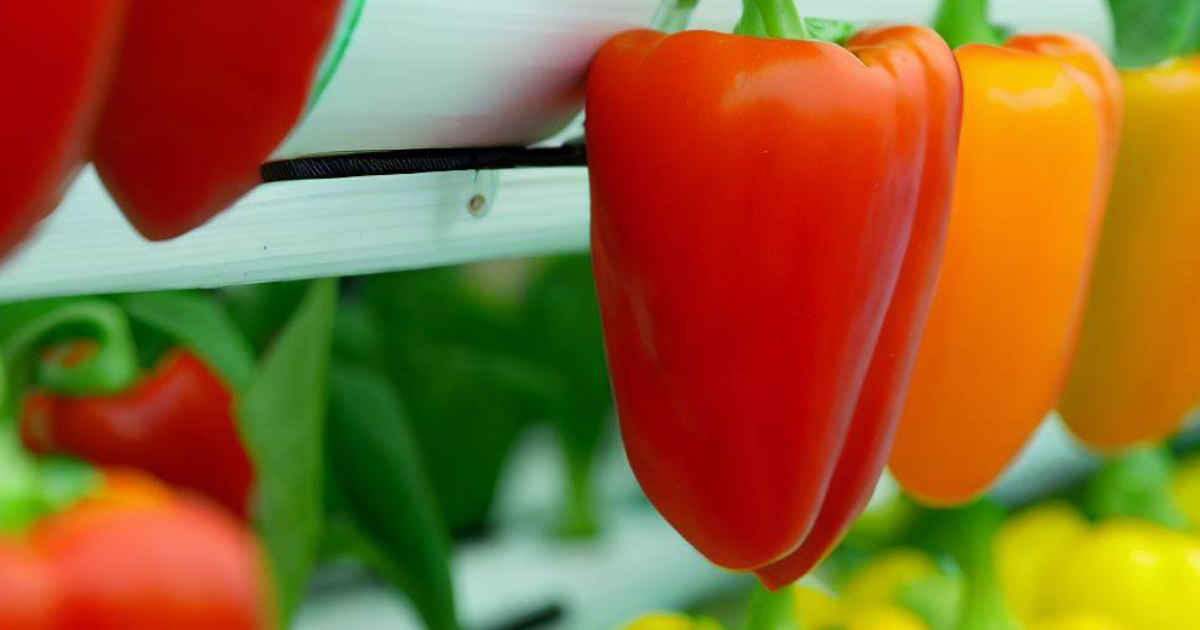
Proper Watering Practices
Maintain appropriate watering practices to ensure healthy growth and avoid water-related issues. Water pepper plants when the growing medium begins to dry out, but avoid overwatering, as it can lead to root rot and other problems. Monitor the moisture levels and adjust the watering frequency accordingly.
Implementing Irrigation Systems
Consider installing an efficient irrigation system in your hydroponic setup. Drip irrigation or a recirculating system can provide precise and controlled water delivery. These systems help optimize water usage, promote root health, and reduce the risk of water-related diseases.
Managing Water Quality and pH Levels
Ensure that the water used in your hydroponic system is of good quality. Filter or treat the water to remove any impurities or excessive minerals that can hinder plant growth. Maintain the pH level within the recommended range for peppers, typically between 5.5 and 6.5, to facilitate nutrient uptake.
Temperature and Lighting Requirements for Hydroponic Peppers
Optimal Temperature Range for Peppers
Peppers thrive in warm conditions, so maintaining an appropriate temperature range is crucial. Aim for temperatures between 70-85°F (21-29°C) during the day and slightly cooler temperatures at night. Providing consistent warmth promotes healthy growth and enhances fruit development.
Providing Adequate Lighting for Growth
Pepper plants require ample light for photosynthesis and proper growth. If growing indoors, use high-quality LED grow lights that emit the appropriate spectrum for plant growth. Position the lights at an optimal distance from the plants to ensure sufficient light intensity.
Adjusting Lighting Schedules for Optimal Yield
Pepper plants require a minimum of 10-12 hours of light each day for proper growth and fruit development. Adjust the lighting schedule to mimic natural daylight hours. Using timers or automated systems can ensure consistency and reduce the risk of light stress or disruptions in plant growth.
Pruning and Training Techniques for Hydroponic Peppers
Benefits of Pruning and Training
Pruning and training techniques help optimize pepper plant growth and maximize yield. Pruning removes unnecessary foliage, improves air circulation, and redirects the plant’s energy towards fruit production. Training methods such as topping, pinching, or using trellises can promote better branching and support heavier fruit loads.
Proper Pruning Methods
When pruning peppers, it’s essential to follow proper techniques. Begin by removing any suckers that emerge from the leaf axils, as they can divert energy from fruit production. Trim off damaged or diseased foliage, ensuring good airflow within the plant canopy. Prune selectively to maintain a balance between foliage and fruiting branches.
Training Techniques for Bushy or Vining Pepper Varieties
For bushy pepper varieties, use pruning techniques to encourage a more compact shape and prevent sprawling growth. Pinch off the growing tips to promote branching and a fuller plant. Regularly tie or stake branches to maintain an upright structure and support heavy pepper clusters.
For vining pepper varieties, such as certain chili peppers, provide a trellis or support system for the plants to climb. Gently guide the vines along the trellis and secure them as they grow. This promotes vertical growth, saves space, and eases harvesting.
Managing Pests and Diseases in Hydroponic Pepper Systems
Common Pests Affecting Peppers
Peppers can be susceptible to pests such as aphids, whiteflies, thrips, and spider mites. Regularly inspect your plants for signs of infestation, including distorted leaves, sticky residue, or visible insects. Early detection allows for prompt intervention and prevents pest populations from spreading.
Organic Pest Control Methods
Embrace organic pest control methods to protect your hydroponic peppers and maintain a healthy growing environment. Introduce beneficial insects like ladybugs, lacewings, or predatory mites that prey on common pests. Neem oil or insecticidal soap sprays can also be effective against soft-bodied insects.
Preventing and Managing Diseases
Disease prevention is key in hydroponic pepper systems. Maintain proper sanitation practices, including cleaning equipment and regularly removing any fallen plant debris. Provide adequate airflow, moderate humidity levels, and avoid excessive moisture to minimize the risk of fungal diseases like powdery mildew or damping-off.
Harvesting and Post-Harvest Care for Hydroponic Peppers
Signs of Pepper Readiness for Harvest
Peppers are ready for harvest when they reach their mature color and desired size. Different pepper varieties have unique characteristics, so observe the color, texture, and firmness of the peppers. Harvest jalapeños when they turn bright green or red, while bell peppers are typically harvested when they reach their full size and change to their final color.
Harvesting Techniques
Use sharp pruning shears or scissors to harvest peppers, making a clean cut just above the stem. Handle the peppers gently to avoid bruising or damage. Harvest peppers regularly to encourage continuous production and prevent overripening.
Post-Harvest Handling and Storage Tips
After harvesting, store peppers in a cool and dry place to maintain their quality. Avoid direct sunlight, as it can cause ripening or spoilage. Store them in perforated bags or containers to allow for airflow and prevent moisture buildup. Consume or use the peppers within a week or consider preserving them by freezing or pickling.
Enjoying the Fruits of Hydroponic Pepper Cultivation
Culinary Uses for Peppers
Hydroponic peppers offer endless culinary possibilities. Use them to add flavor, heat, and vibrant color to your favorite dishes. Experiment with stir-fries, salsas, stuffed peppers, hot sauces, or pickled creations. Let your creativity and taste buds guide you in exploring the versatile world of peppers.
Exploring Different Pepper Varieties and Flavors
Peppers come in a wide range of flavors and heat levels. From mild and sweet bell peppers to fiery habaneros or Thai chili peppers, each variety brings its own unique taste experience. Embark on a pepper-tasting journey, trying different varieties and discovering your personal favorites.
Recipes and Cooking Inspiration
Delve into the culinary realm of peppers with exciting recipes and cooking inspiration. Explore online recipe databases, cookbooks, or cooking blogs for creative dishes featuring hydroponic peppers. From spicy appetizers to zesty main courses and delightful desserts, let the flavors of peppers elevate your culinary repertoire.
Conclusion
Growing hydroponic peppers opens a world of flavor and spice, enabling year-round cultivation and ensuring a bountiful harvest. With proper techniques in setting up the hydroponic system, nutrient management (
Study on Hydroponic Pepper Yield and Nutrient Uptake]), pruning, and pest control, you can enjoy the rewards of homegrown, flavorful peppers. Embrace the versatility of hydroponic pepper cultivation and add a fiery touch to your culinary adventures.
FAQs
1. How long does it take for hydroponic peppers to reach maturity?
The time for hydroponic peppers to mature varies by variety. On average, most peppers take around 60 to 90 days from transplanting to reach full maturity.
2. Can hydroponic peppers be grown indoors?
Absolutely! Hydroponic peppers thrive in indoor environments, allowing you to enjoy fresh peppers year-round, regardless of outdoor conditions.
3. Do hydroponic peppers require pollination?
Most pepper varieties are self-pollinating, meaning they don’t require external pollination. Gentle air movement within the greenhouse or manual shaking of the plants can help facilitate pollination.
4. Can I reuse the hydroponic nutrient solution for peppers?
It’s generally recommended to refresh the nutrient solution every 2-3 weeks to ensure a balanced nutrient supply. Regularly monitor the solution’s pH and nutrient levels to maintain optimal conditions for your peppers.
5. Are hydroponic peppers more flavorful compared to conventionally grown peppers?
Hydroponic peppers can be exceptionally flavorful, thanks to the controlled nutrient delivery and optimal growing conditions. However, flavor can also be influenced by variety, ripeness, and personal preferences.
*We may earn a commission from purchases made through our links, at no cost to you. This does not affect our product recommendations. Please see our disclosure to learn more.
